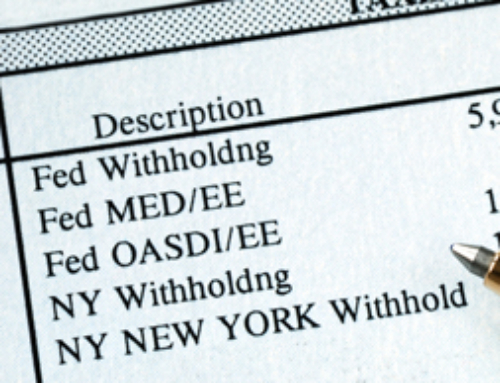 5 Tax Lessons Learned from Filing Your 2010 Tax Return
5 Tax Lessons Learned from Filing Your 2010 Tax Return
By Eva Rosenberg, EA
One of my editors wanted to clarify something. Andrea was surprised to learn that the IRS pays interest on refunds. After all, isn’t that the whole point of reducing your withholding—not to give the IRS an interest-free loan all year?
Andrea is right. When that money is deducted from your paycheck to generate those great big refunds, the IRS doesn’t pay you a dime extra for using your money all year. That leads us to…
Lesson # 1: If you file your tax return a year or two late, the IRS pays a better rate of return than your bank or your investments.
The IRS pays between 3 and 6 percent on 2008 and 2009 tax refunds. I never thought about filing late as a deliberate strategy for increasing a rate of return. But after trying to find an IRA that pays more than .35 percent, you start to wonder about the Bank of IRS. Be careful. You must file within three years of the due date of the original tax return, or you will lose the entire refund.
Lesson #2: Perfection means procrastination.
If getting one bit of data is taking too long, or you are facing too many obstacles to getting it, just make a reasonable, informed estimate of the numbers. File the tax return. Move on with your life. If the accurate information surfaces and it’s significantly different, you can amend the original tax return. If you chase after that “perfect” return, you may find yourself missing the filing deadline. People do. Really.
Lesson #3: You must read the instructions.
I hear from people who made mistakes when entering information on a tax form, or into tax software. Later, they learned about the error, and then found the specific information or instruction was right there on the form. Anytime you use a form you’ve never used before, you should be reading the instructions.
Lesson #4: It’s OK to file your extension early.
Why rush at the last minute? Several people have told me they tried to find a free way to file their extensions late at night. They finally gave up and went to a site where they had to pay a fee to file their extension. Or the system they wanted to use was down, or overloaded, and they didn’t know what to do. You won’t have that problem if you file your extension a week or two early.
Lesson #5: Don’t forget to split up your refund.
IRS Form 8888lets you split a refund between three accounts. You can still do this if you’re on an extension. There may be several reasons to split up a refund before you get it:
- You want to put some of your refund into a savings account so you don’t spend it.
- You are in the middle of a divorce and want to receive your share of your refund without having to fight your ex to sign it over to you.
- You want to use the refund to fund an IRA, Roth IRA, or SEP-IRA. Of course, the IRA account must be established before you deposit the refund. Remember to give advance notice to the IRA trustee or administrator, telling them to which year you want to apply the contribution—2010 or 2011.
What lessons did you learn this year?

Itemized Deduction, AMT, and Other Tax Nightmares
Do I Get a Deduction for My Gifts? Or Do I Get Punished for Being Generous?
Estate Tax Tips: A Choice for 2010
Free Tax Services: Do You Qualify?
6 Things You Can Do All Year Long to Save Money on Your Tax Bill






